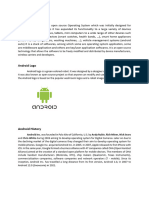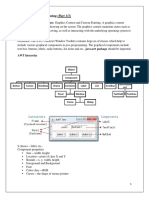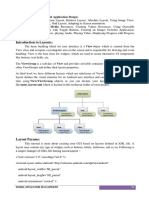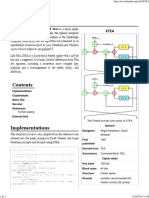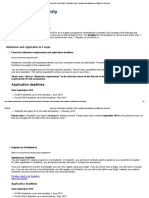0% found this document useful (0 votes)
358 views23 pagesSession Tracking in Servlets
Session tracking is used to maintain state in HTTP, which is stateless. There are four main techniques: cookies, hidden form fields, URL rewriting, and HTTP session. Cookies work by adding a cookie containing user data to the response, which is then sent back with future requests. Hidden form fields maintain state by storing hidden user data in HTML forms. URL rewriting appends identifying tokens to URLs. The HTTP session stores user data on the server side.
Uploaded by
vru23Copyright
© © All Rights Reserved
We take content rights seriously. If you suspect this is your content, claim it here.
Available Formats
Download as DOCX, PDF, TXT or read online on Scribd
0% found this document useful (0 votes)
358 views23 pagesSession Tracking in Servlets
Session tracking is used to maintain state in HTTP, which is stateless. There are four main techniques: cookies, hidden form fields, URL rewriting, and HTTP session. Cookies work by adding a cookie containing user data to the response, which is then sent back with future requests. Hidden form fields maintain state by storing hidden user data in HTML forms. URL rewriting appends identifying tokens to URLs. The HTTP session stores user data on the server side.
Uploaded by
vru23Copyright
© © All Rights Reserved
We take content rights seriously. If you suspect this is your content, claim it here.
Available Formats
Download as DOCX, PDF, TXT or read online on Scribd
/ 23






















